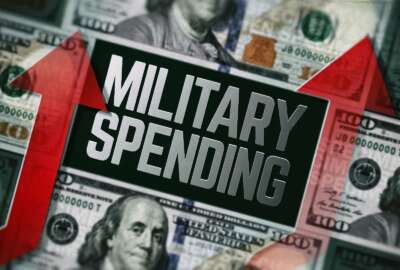
Everything you need to know about DoD pay and benefits changes in 2018
Military and Defense Department employees will see some big changes to retirement and prescription drug copays starting next year.
As the year is about to change to 2018, so are some big benefits that will affect government workers, especially those in the military and Defense Department.
TRICARE, retirement and health care will all change in some important ways during 2018.
Federal News Radio is rounding up all the changes you need to know about before they take effect.
Pharmacy copays
Time to dig a little deeper into your pockets for prescription drugs if you use TRICARE.
Starting Feb. 1, copayments for drugs will increase for TRICARE Pharmacy Home Delivery and retail pharmacies.
Retail in-network copayments for 30-day generic supplies will increase from $10 to $11 and brand-name drug copays will increase from $24 to $28.
Home delivery copays for 90-day supplies of generic drugs will go from being free to costing $7. Brand-name drug copays will increase from $20 to $24 and copays for drugs that are not on the insurer’s preferred list and are not medically necessary increase from $49 to $53.
The good news is prescriptions filled at military pharmacies will still be free.
The increases were mandated by the 2016 National Defense Authorization Act.
Blended retirement
After all the talk, it’s finally here. Service members can sign up for the blended retirement system starting Jan. 1.
The transition marks the most wide-reaching and significant change to military pay and benefits in 70 years, according to DoD.
The new plan moves military members from a retirement system that mostly relied on a vested defined benefit plan to one that includes a reduced defined benefit plan with greater TSP benefits, continuation pay and some lump-sum options.
“Blended retirement” incorporates four major changes to the current retirement system for the uniformed military.
First, the employing military services will contribute 1 percent of a service member’s monthly pay to his or her TSP account. These contributions are in addition to an employee’s basic pay; the military services will continue to contribute whether or not members make their own contributions from their pay.
In addition, service members will be automatically enrolled to contribute 3 percent of their basic pay. The program will re-enroll them annually if service members stop making contributions.
Military employers will match their service members’ TSP contributions dollar-for-dollar for the first 3 percent of basic pay and 50 cents on the dollar for the next 2 percent.
Finally, the program will invest employee contributions in an “age appropriate” lifecycle fund rather than the government securities G fund, unless service members choose otherwise.
Two groups of service members will be eligible to participate in the new retirement system:
1) Service members who enter the military on or after Jan. 1, 2018.
2) Members of the military with 12 years or fewer of service who decide to opt-in to blended retirement.
Individual services will determine which military members are eligible for blended retirement. Reservists who have less than 4,320 retirement points before Dec. 31, 2017 may also be eligible.
Health Care
The government wants to give federal workers more options in the insurance market.
A proposed rule from the Office of Personnel Management makes sure that all Federal Employee Health Benefits Program carriers have a minimum of two health benefit options and a high-deductible plan or three health benefit plans.
OPM says the change will help get rid of asymmetry in the marketplace.
The Federal Employee Health Benefits Program insures about 8.2 million federal employees and provides more the $53 billion a year in health benefits.
Copyright © 2024 Federal News Network. All rights reserved. This website is not intended for users located within the European Economic Area.
Scott Maucione is a defense reporter for Federal News Network and reports on human capital, workforce and the Defense Department at-large.
Follow @smaucioneWFED
Related Stories
 Exclusive
Exclusive 



